DIY greenhouse ideas – easy ways to organise your outdoor growing space
Get plants and seedlings off to a flying start with these easy and inexpensive DIY greenhouse ideas

Growing your own plants and flowers or fruit and veg is an easy way to cut costs or feed a family and is enjoying a huge surge in popularity right now. Starting off plants and seedlings in a greenhouse gives them the best chance at survival, providing shelter from the elements, protection from insects and pests and creating the optimum micro climate to help them thrive.
But if a traditional glass-house-style greenhouse is too large for a small garden or way above budget, don’t rule one out. There are plenty of budget garden ideas around DIY greenhouse ideas and pint-sized options that will suit the smallest of outdoor spaces and won’t cost a fortune to set-up.
DIY greenhouse ideas
‘The placement of your greenhouse is crucial when it comes to building one at home,’ says Evie Lane, Gardening expert at Primrose. ‘Choose a north or south facing area for your greenhouse placement – one of the most vital requirements is that it receives a good amount of consistent sunlight throughout the day.’
‘When it comes to the best materials to use for a greenhouse, you can use glass, fibreglass, acrylic, or polycarbonate plastic to cover your greenhouse – but different materials will allow different amounts of light to pass through,’ adds Evie. ‘Traditionally, glass has been the go-to for greenhouse materials due to allowing the most light through, but depending on the plant, it can transmit too much light and overheat plants.’
From modular DIY greenhouse kits and easy-up structures, to mini portable grow houses, cold frames and cloches, there are plenty of options to consider when it comes to DIY greenhouse ideas. Scroll down to find your favourite DIY garden ideas.
1. Opt for a mini wooden greenhouse

If outdoor space is tight look for smart budget small garden ideas. Choosing a slimline greenhouse that takes up minimum floor space is the way to go and can be easily assembled and positioned on a patio or sunny deck at the end of the garden. A traditional wooden-framed greenhouse looks in keeping with a period property or country abode and can be painted in a heritage colour so that it blends in with its surroundings.
Tall, slender panes let in lots of light and an auto-vent and opening windows allow plenty of ventilation for the plants inside. It’s also well worth looking for a design that has adjustable shelving so you can arrange shelf height to give plenty of room for taller pots and allow growing space for plants in grow bags.
Sign up to our newsletter for style inspiration, real homes, project and garden advice and shopping know-how
Buy now: Georgian greenhouse, £679.99, Forest
2. Build your own flatpack greenhouse
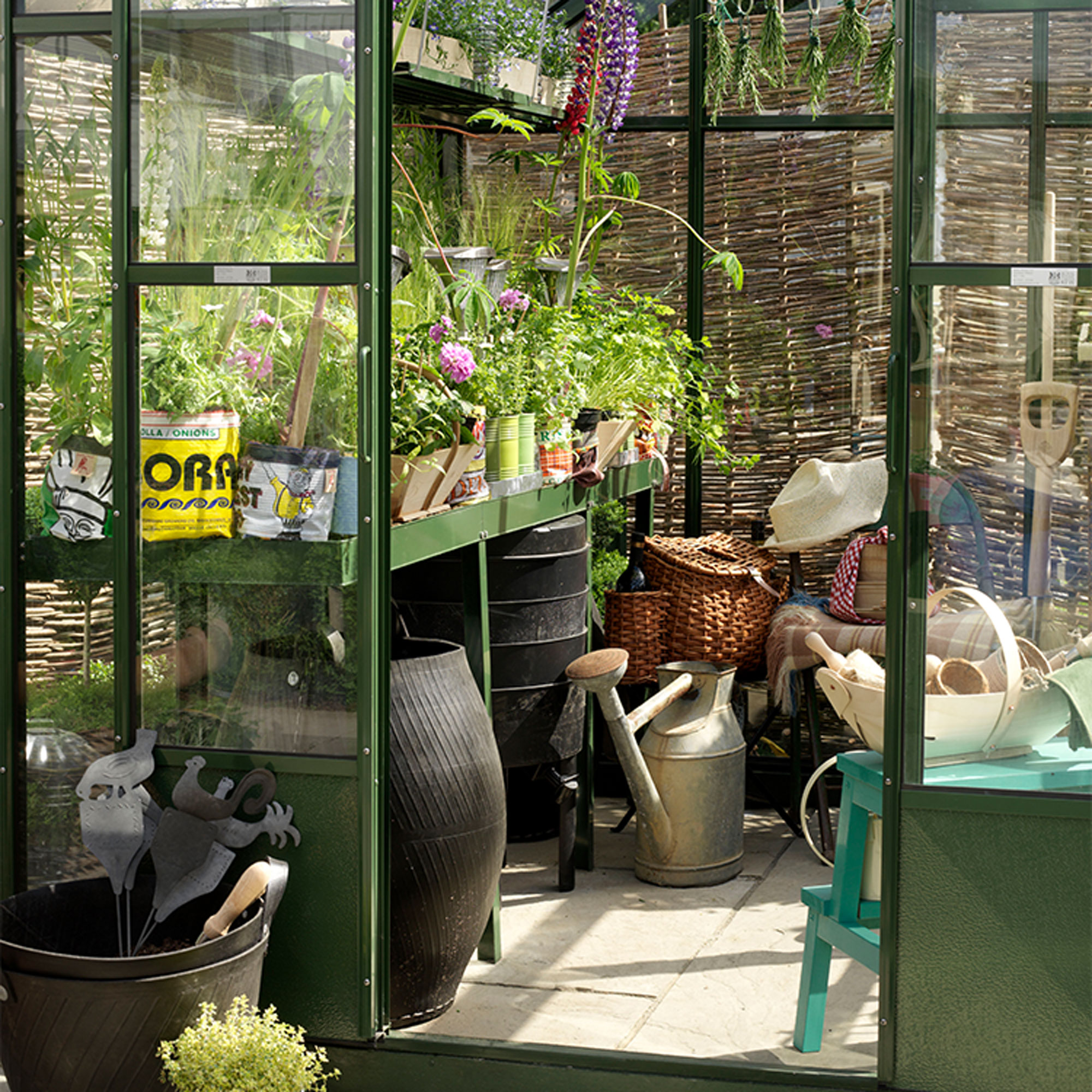
Cut costs of your garden makeover complete with veg garden by constructing your own DIY greenhouse idea using a flatpack kit. Available in a range of styles and sizes, a modular design with an aluminium frame is lighter and easier to put together than a traditional wood-framed greenhouse, and won’t require painting or preservatives, so is a lower-maintenance option than wooden designs.
When it comes to glazing, although glass is the traditional choice, there are now lots of less pricey options that are lighter and safer to use, especially if there are pets or little ones around in the garden. Polycarbonate glazing is light, virtually unbreakable and gives UV protection that’ll prevent plants being harmed by hot sun.
Similar: Lacewing polycarbonate greenhouse, £554.99, Primrose
3. Save space with a neat lean-to design
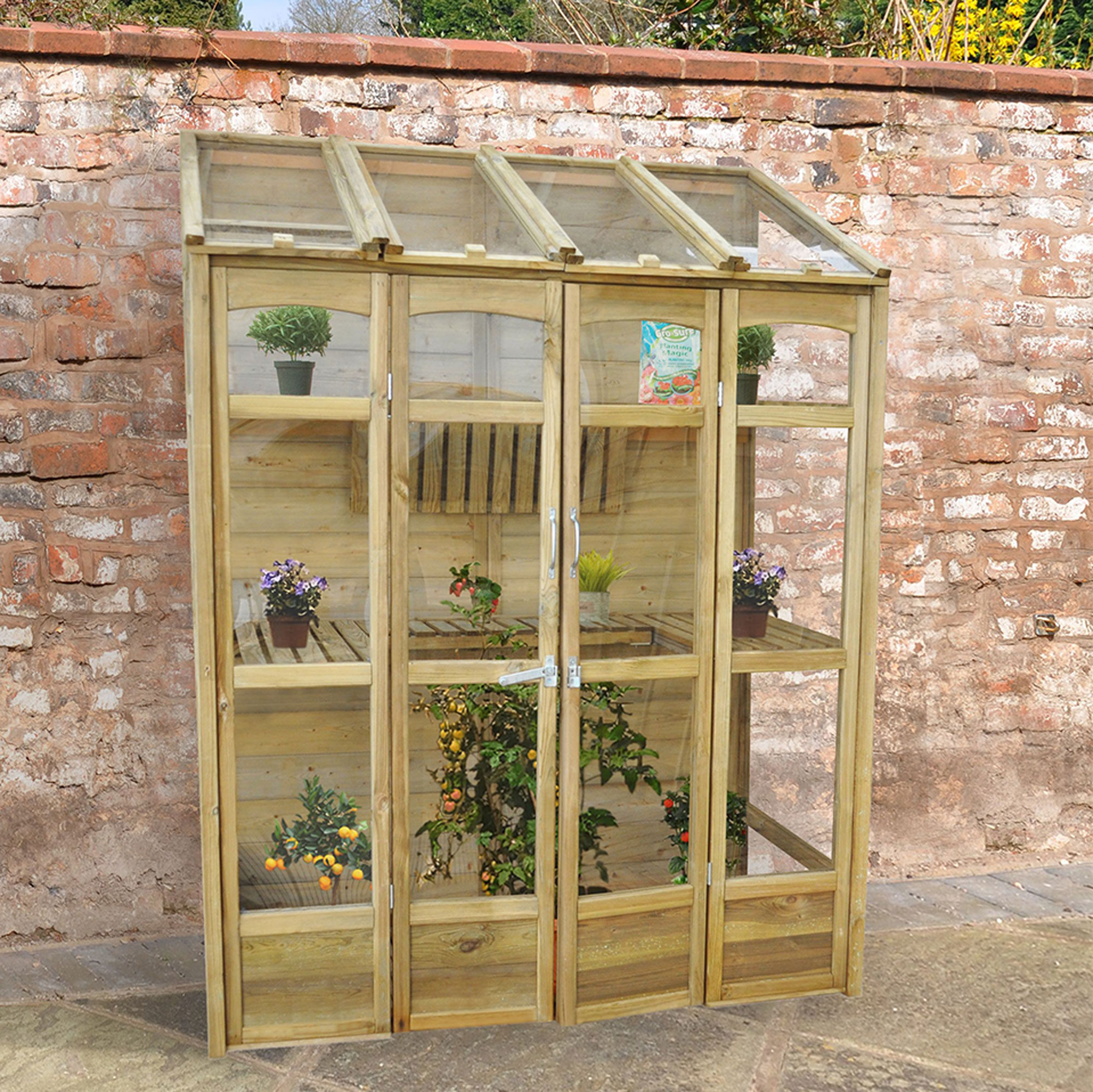
If lack of space rules out a full-sized greenhouse, then consider a compact lean-to style that can be butted up against a wall. As well as being neater and narrower than many traditional styles, an advantage of being positioned close to the house is that it is closer to utilities, such as electric and water, which will make watering and heating easier.
Being positioned up against a wall can also provide extra protection for the plants inside. A solid wall will absorb any heat during the day and slowly release it into the greenhouse at night, keeping the temperature inside warm and more consistent. Having the greenhouse positioned closer to the house can also save a long trek up the garden over the colder months of year.
Buy now: Forest garden acrylic pent greenhouse, £616, B&Q
4. Double-up with a joint structure

Save space outdoors by opting for a combination shed and greenhouse set-up that can be constructed by two people over a weekend. Giving the versatility of both when garden square-footage is tight, a roomy wooden shed at one end provides storage for tools and equipment, while a glazed and vented potting area at the other end gives plenty of growing space for plants.
Proper ventilation is key for any greenhouse, giving greater control over the internal temperature and humidity and increasing airflow. Temperatures inside a greenhouse can rise more than 15% higher than outside and without ventilation even the most tropical species will suffer, risking dehydration, leaf scorch, sun-flag and fungal infections. Greenhouse ventilation can come via simple outward opening windows and vents or via an automatic ventilation system.
Buy now: Rowlinson garden potting store, £1949, Cuckooland
5. Use a cold frame to shield plants from the elements
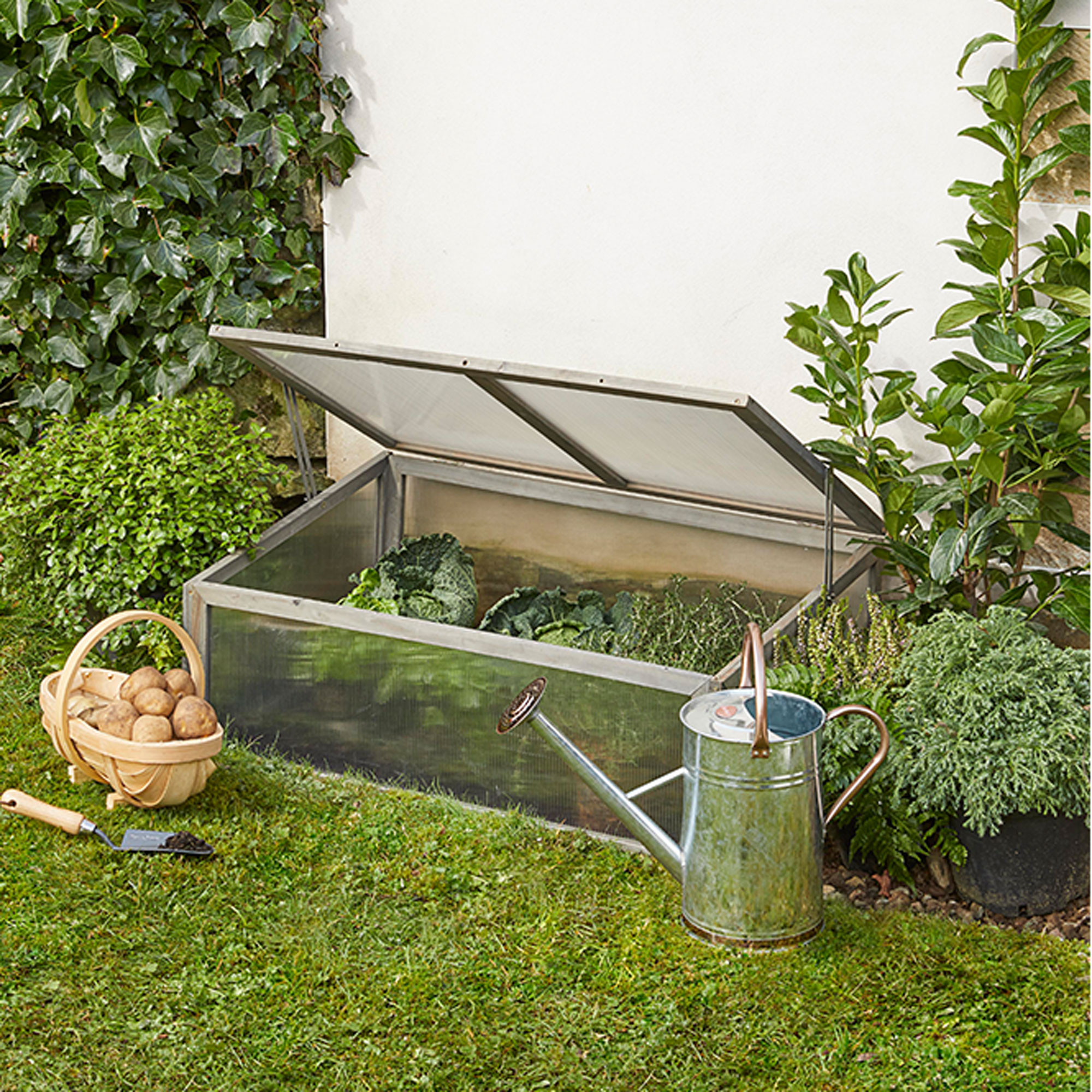
If floor space is super-tight outdoors and there isn’t enough room for a greenhouse, then using a cold frame as a mini greenhouse is one of the best ways to go about it. Essentially, a mini greenhouse, a cold frame has an open bottom with clear top and sides, and sits directly on the ground to provide tender plants protection from the elements. It can be used to cover plants growing in soil or alternatively pots can be simply popped inside the frame. A hinged lid will provide ventilation so that plants don’t overheat.
Indoor-sown plants benefit from a period of ‘hardening off’ before being moved outside permanently. This is generally done by placing plants outdoors in a sheltered spot for longer periods each day over a couple of weeks. Using a cold frame relieves the chore of moving plants inside and out, as the lid can be simply opened and closed for longer each day.
6. Opt for a Victorian-style cloche
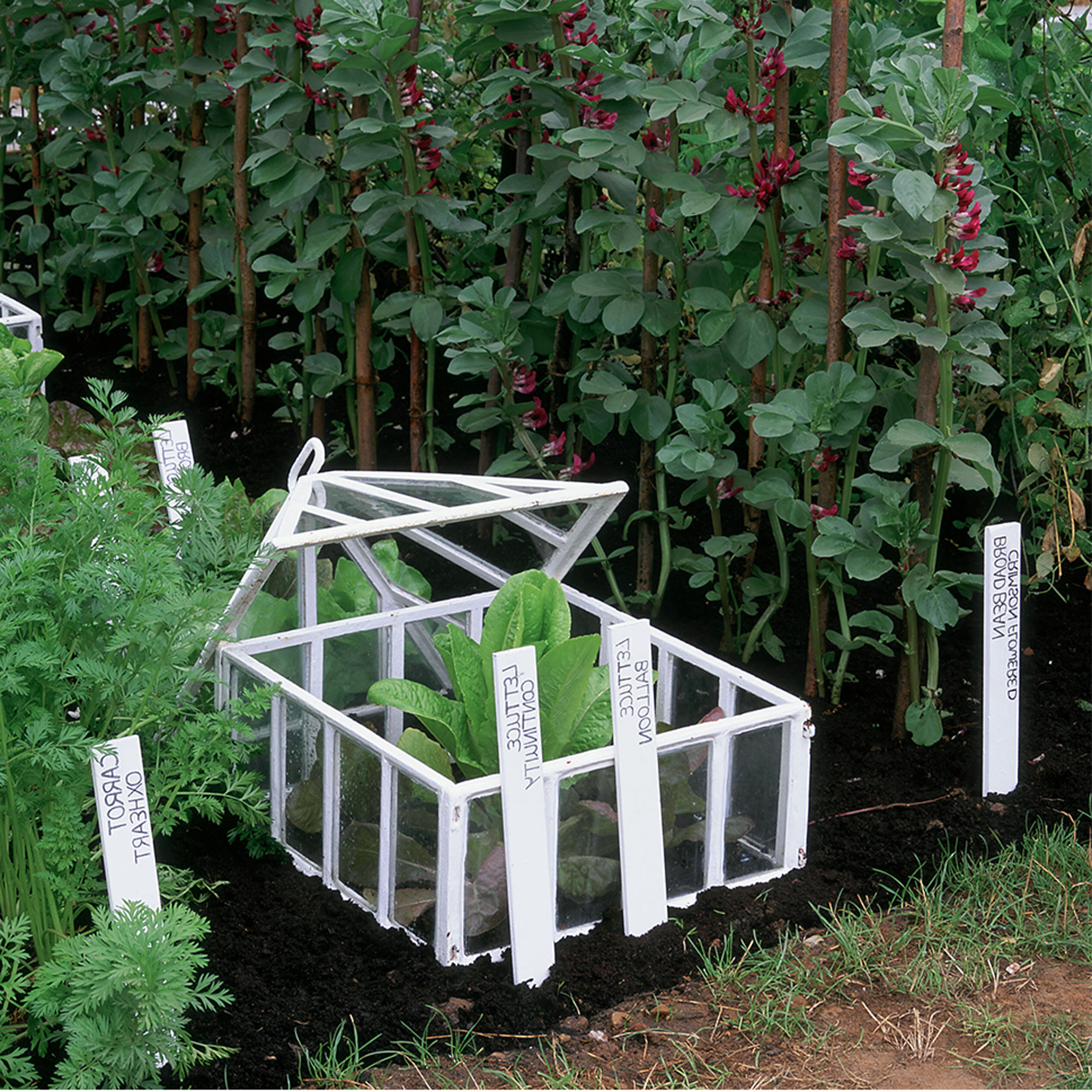
A traditional cloche is a simpler version of the cold frame and was favoured in Victorian times. Often made of cast-iron with glazed sides that slot together, it has a removable roof that sits on top, with the cloche placed directly on the ground to warm the soil and give protection to a few plants at a time. The roof can be lifted off when ventilation is needed.
7. Pick a portable grow house

A temporary solution that is perfect for use over the growing season, a portable greenhouse will provide protection for a small amount of plants and can be easily erected on a patio or deck (then popped away in the shed out of season). Consisting of a lightweight slot-together shelving unit, a zip-up cover simply slots over the top of the frame, with a door flap that can be rolled up to provide ventilation during the day time.
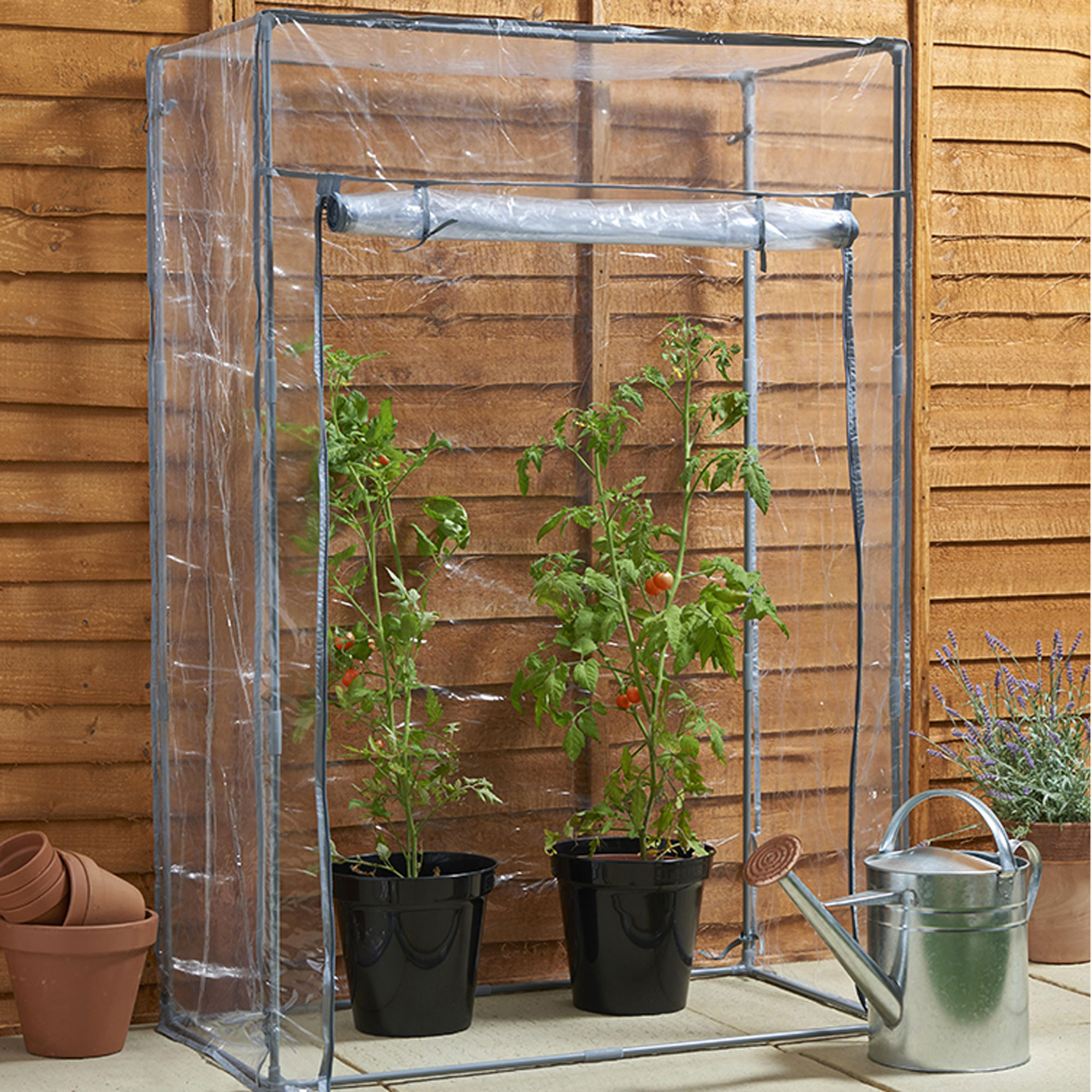
Portable greenhouses come in a range of sizes, from slimline towers that are compact enough for a balcony or small patio, to larger double-width designs or super-sized polytunnels that can accommodate freestanding shelving units inside. Portable designs do tend to be lighter than wooden or aluminium greenhouses, so it’s wise to use bricks, weights or sandbags to secure and support the base and prevent lighter-weight designs from blowing away in high winds.
Buy now: PVC tomato house with cover, £12, Wilko
8. Slot in a slimline design

For a more stylish and sturdier alternative to a plastic pop-up grow house, opt for a mini wooden design that’s super-easy to put together and can be positioned on a sunny patio or balcony. Lightweight polycarbonate top and sides will let light in and retain heat, while a design with two independently opening lids gives the option of letting extra light or air in where needed.
9. Use up-cycled containers to start off seeds
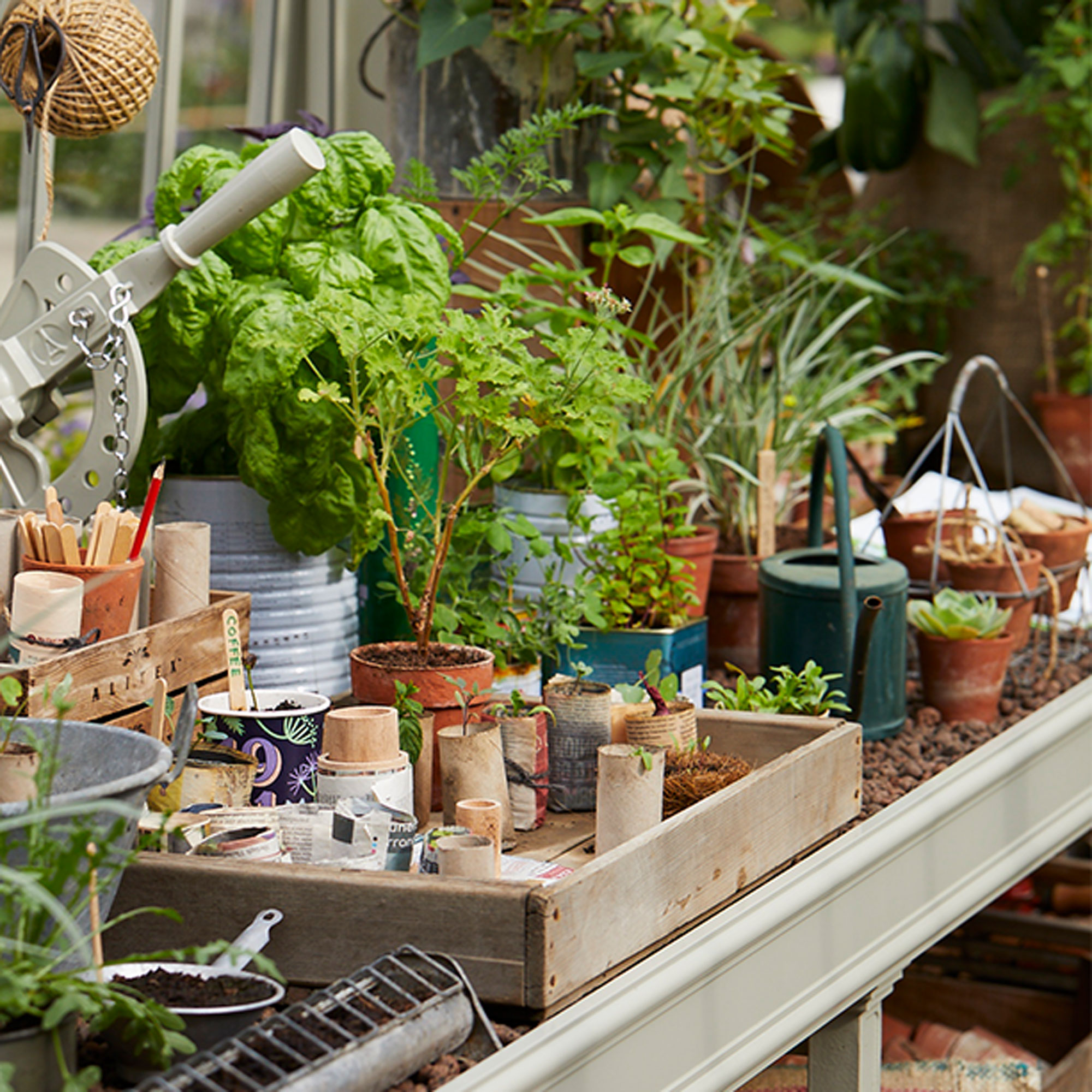
If you’re planting up lots of seeds to go into the ground once they’ve sprouted, cut costs by making your own DIY containers. Cardboard egg cartons are perfectly sized for single seeds or make your own growing tubes using rolls of newspaper. If you’re growing vegetables like carrots, peas and beans that don’t like their roots disturbed, use loo roll inners filled with soil to start off seeds - any cardboard or paper will compost down once planted in soil outdoors.
10. Organise shelves and surfaces
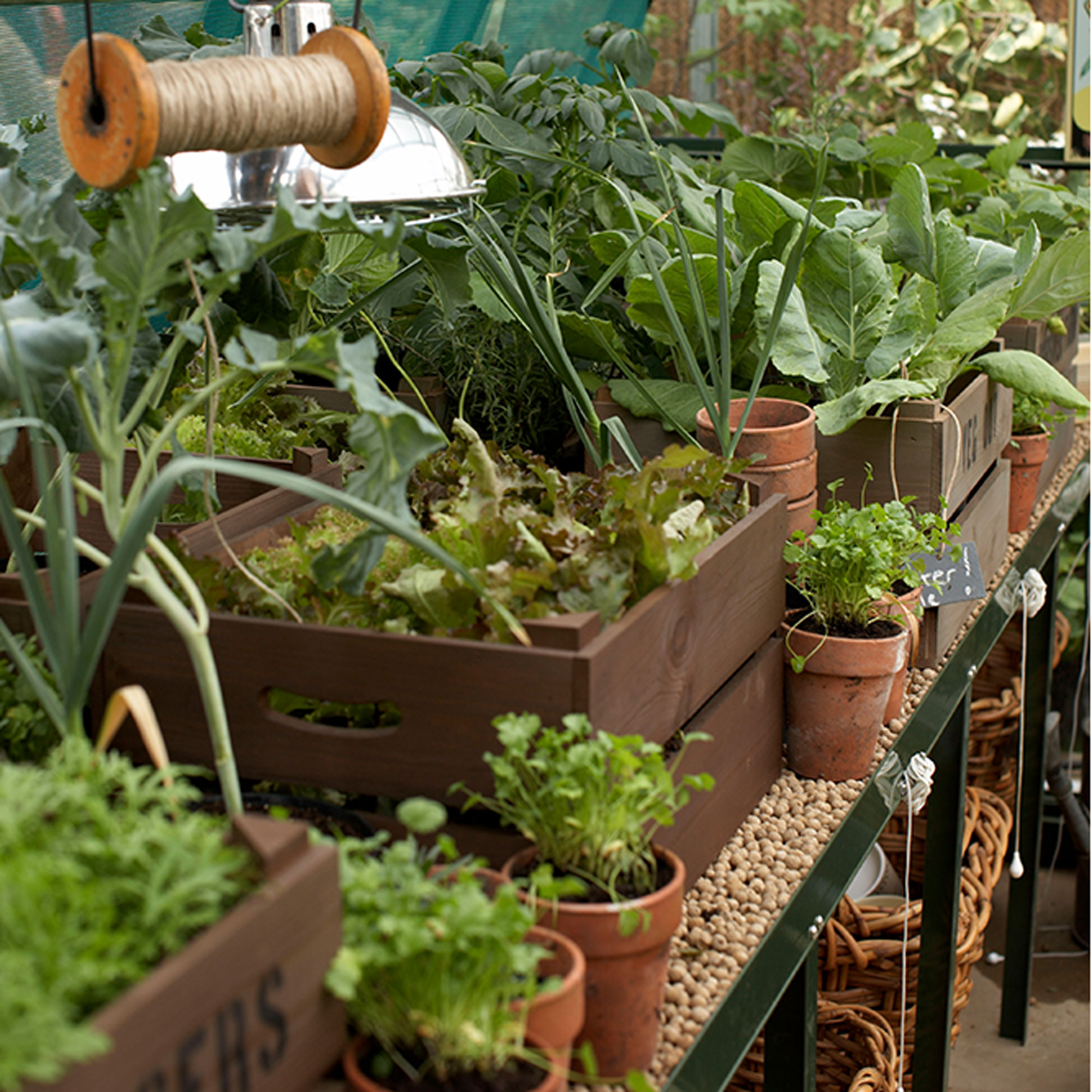
Keeping the interior of your greenhouse in order will help you to use the space more efficiently. Staged shelving is a great way to organise plants and seedlings, helping you to squeeze more into a limited space and allowing you to make full use of the height of a greenhouse.
Opt for slatted shelves to allow light to permeate, air to circulate and water to drain away. Alternatively cover metal or wire shelves with a layer of stones or gravel to provide drainage for plants.
11. Make DIY planters from recycled tins

Look for upcycling ideas for the garden to save spending out. Save the pennies when it comes to pots and planters by upcycling different containers for growing plants and seedlings in. Colourful tins and cans will look bright and cheery lined up on shelves and bring a splash of colour to your greenhouse before plants and flowers come into bloom. Use a bradawl to make drainage holes in the bottom of cans.
12. Make use of plastic containers

When tender seedlings are planted outdoors, they’ll need protection if a frost or cold snap is predicted. Instead of throwing plastic drinks bottles, dessert tubs, clear plastic bowls and containers away into the recycling, use them as mini covers popped over plants directly on the soil or in beds. Just use a sharp knife to cut pop bottles in half.
How can I make a simple greenhouse at home?
Making a DIY greenhouse idea at home needn’t be too tricky, provided you’re fairly competent at DIY and have the tools and materials available. Using leftover timber, wooden pallets, glazed doors, redundant glass panes or polycarbonate panels, it’s possible to put together a basic structure and is a great way of cutting costs. Although you will need to factor in the cost for screws, bolts, fittings, etc, so allow for this when you’re weighing it all up.
Is it cheaper to buy your own greenhouse?
There are lots of modular greenhouse kits and mini flatpack designs available, many that aren’t too pricey, so it really depends on if you have the skills and the materials readily available. Kits are available in lots of different styles and sizes, with many designs able to be customised to suit the shape and size of the plot.
That being said, building your own greenhouse does allow you creative control and the greenhouse can be tailored to your exact specifications, plus a home-built design will have bags of character and personality that a ready-made greenhouse might lack.

Lisa is a freelance journalist who has written about interiors for more than 25 years. Previously editor of Style at Home magazine, she has worked on all the major homes titles, including Ideal Home, Country Homes & Interiors, 25 Beautiful Homes and Homes & Gardens. She has covered pretty much every area of the home, from shopping and decorating, crafts and DIY to real homes and makeovers and now regularly writes gardening stories for Ideal Home.